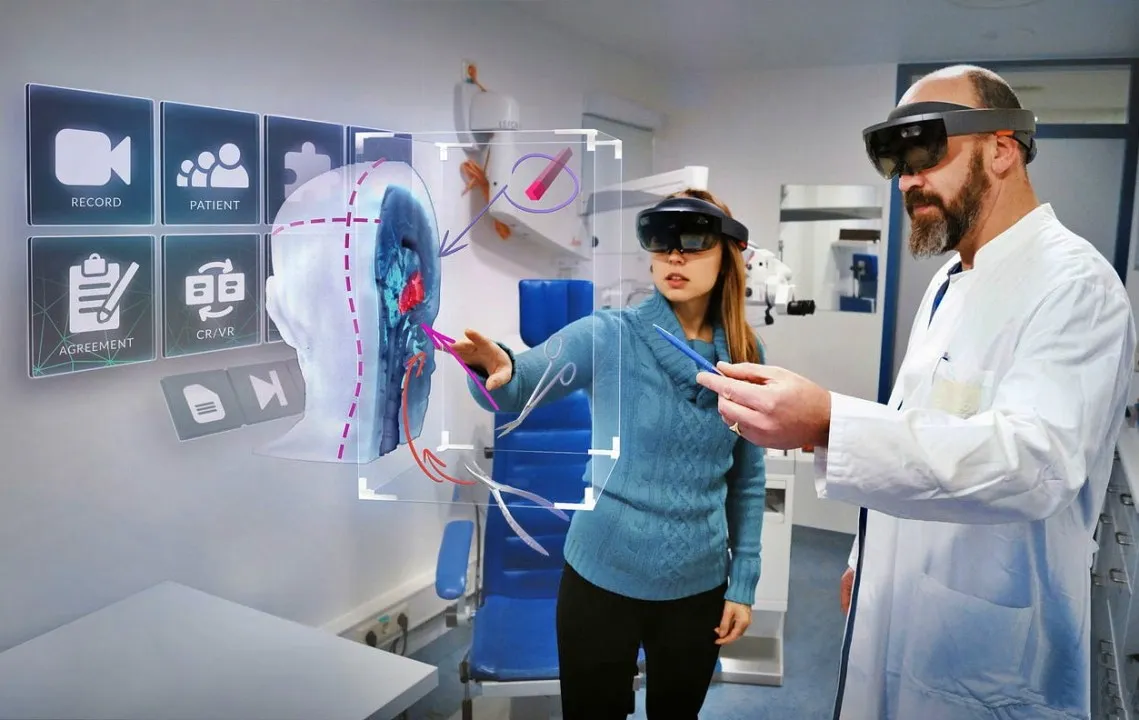Augmented Reality in Healthcare: An Overview
Augmented reality (AR), virtual reality (VR), and mixed reality (MR) offer numerous possibilities in healthcare, including education, surgical visualization, patient relaxation, PTSD treatment, and physical therapy.
Differences Between AR, VR, and MR
- Augmented Reality (AR): Enhances real-world environments by projecting digital information onto surroundings (e.g., Google Glass).
- Virtual Reality (VR): Fully immersive, completely detaches users from reality.
- Mixed Reality (MR): Combines real and digital worlds interactively.
Real-Life Examples of AR in Healthcare
1. Defibrillator Usage Guidance
AR glasses guide users step-by-step in emergency defibrillator use.
2. Remote Patient Visualization
AR glasses enable physicians to view remote patients in 3D, beneficial in dermatology and plastic surgery.
3. Symptom Description Assistance
AR helps patients accurately describe symptoms, improving patient-doctor communication.
4. Vein Visualization
AR technologies like AccuVein assist medical professionals in locating veins, improving accuracy and patient comfort.
5. Motivational AR for Runners
AR apps like "Zombies, Run!" motivate runners by gamifying exercise.
6. AR in Medicine Packaging
AR-enhanced packaging provides interactive, accessible medication information.
7. Surgical Assistance
AR and MR technologies assist surgeons by visualizing critical details during operations.
8. Educational AR for Children
AR tools like Curiscope's Virtuali-tee provide immersive anatomy education, enhancing children's learning experiences.
